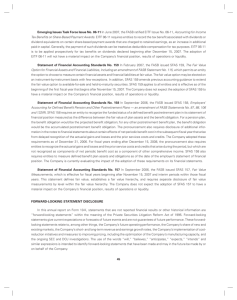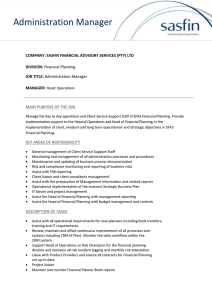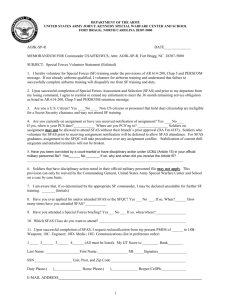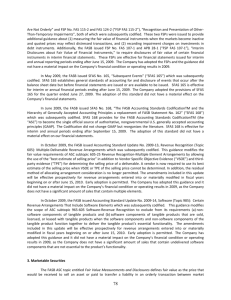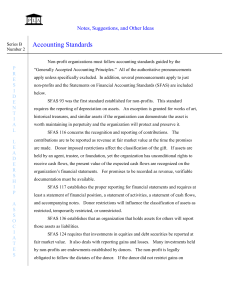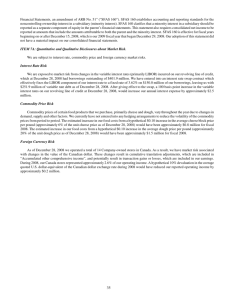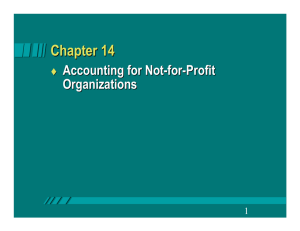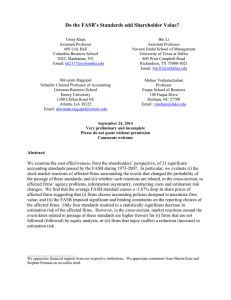Chapter 15: Oil & Gas Accounting
advertisement
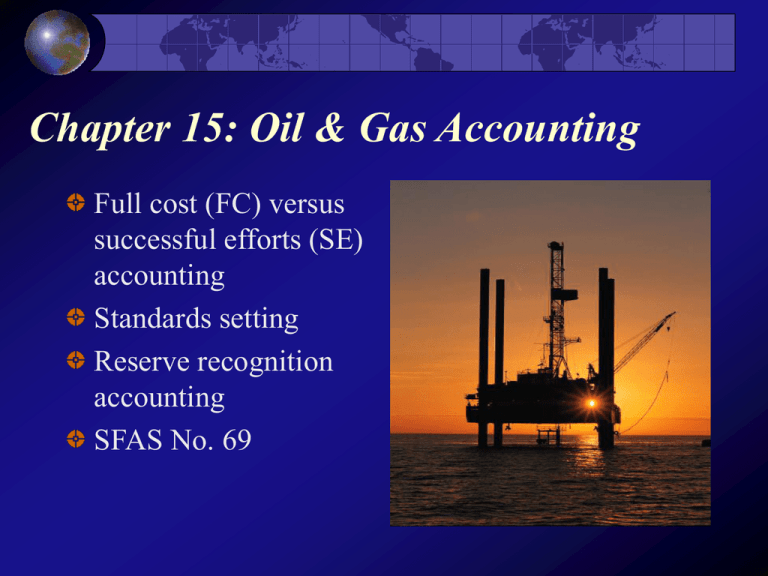
Chapter 15: Oil & Gas Accounting Full cost (FC) versus successful efforts (SE) accounting Standards setting Reserve recognition accounting SFAS No. 69 Conceptual Differences Between FC & SE Both methods are allowed under GAAP Both present as assets only the costs incurred in exploration and development Basic difference is the size of the cost center used in the capitalize/expense decision for exploration costs Trends SE accounting was the only method used prior to the late 1950s and early 1960s Problems with application of the historical cost model led to increasing use of FC model in late 1960s Full Cost Accounting Results in a smoothing of reported income because costs that are written off in the current period under the SE method are capitalized and amortized against revenues of a number of future periods Generally, the larger, more mature and fully integrated enterprises in the oil and gas industry use SE, while the smaller, less integrated enterprises use FC Standards Setting in Oil & Gas AICPA commissioned ARS (1964) ARS 11 (1969) published recommending use of SE accounting, not FC APB’s Committee on Extractive Industries Reviewed ARS 11 and published its report 1971 Accounting and Reporting Practices in the Petroleum Industry reviewed in public hearing Favored SE method Standards Setting in Oil & Gas Federal Power Commission issued order which required the FC method APB’s Committee on Extractive Industries was unable to finalize its paper FASB formation begins Standards Setting in Oil & Gas 1972, SEC proposed that those enterprises that do not follow SE should disclose what net income would have been under that method ... later retreated from proposal 1973 foreign oil embargo The Energy Policy and Conservation Act of 1975 Standards Setting in Oil & Gas FASB worked closely with the SEC Issued a discussion memorandum in 1976 Held a public hearing in the spring of 1977. July 1977, the FASB issued an exposure draft, which required the SE method of accounting SEC issued ”Securities Act Release No. 5861,” which proposed to amend regulations to incorporate the accounting standards set forth in the exposure draft in the event a statement of financial accounting standards was not issued ... Standards Setting in Oil & Gas December 1977. SFAS No. 19 required SE and eliminated FC. Bending to political pressure The SEC effectively circumvented SFAS No. 19 in ASR 253, which permitted either FC or SE As a result, SFAS No. 25, which suspended the mandatory SE provisions of SFAS No. 19, was issued in February 1979 Survey of all financial analysts involved with the oil and gas industry Conducted primarily to determine whether analysts favored FC or SE Over 40 percent responded They overwhelmingly favored the SE method 83% of the analysts thought that the value of recoverable reserves should be disclosed in financial reports. Response suggests the historical cost model simply does not provide adequate information to decision makers. Reserve Recognition Accounting (RRA) Perceived failure of the historical cost method led the SEC to advocate RRA August 1978, the SEC issued Release 335969, which ushered in RRA on an experimental basis for three years RRA Valuation Method 1. Estimate the timing of future production of proven reserves, based on current economic conditions 2. Estimate future revenue by using estimate from (1) and applying current prices for oil & gas, adjusted only for fixed contractual escalations. 3. Estimate future net revenue by deducting from the estimate in (2) the costs to develop and produce the proven reserves 4. Determine the PV of future net revenue by discounting the estimate in (3) at 10 % SFAS No. 69 Represents an attempt by the FASB to combat the standards-overload problem Is not applicable to enterprises that are not publicly traded nor to publicly traded Requires the disclosure of financial information outside the basic financial statements or notes SFAS No. 69 Required Disclosures Proven oil and gas reserve quantities Capitalized costs relating to oil & gas-producing activities Costs incurred in oil & gas property ... Results of operations for oil & gas-producing activities A standardized measure of discounted future net cash flows relating to proven oil and gas reserves. Chapter 15: Oil & Gas Accounting Full cost (FC) versus successful efforts (SE) accounting Standards setting Reserve recognition accounting SFAS No. 69
